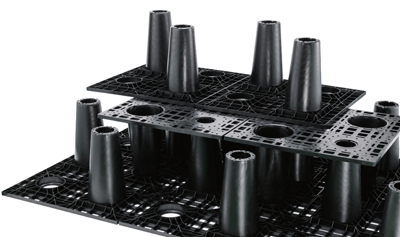What Is a Rainwater Filtration Tank?
 Rainwater filtration tanks, often used alongside rainwater storage tanks, are typically installed underground to facilitate the percolation of rainwater into the ground. This helps to prevent surface overflow, enrich groundwater and spring water, and reduce the burden on sewer systems by diverting large volumes of rainwater.
Rainwater filtration tanks, often used alongside rainwater storage tanks, are typically installed underground to facilitate the percolation of rainwater into the ground. This helps to prevent surface overflow, enrich groundwater and spring water, and reduce the burden on sewer systems by diverting large volumes of rainwater.
In modern urban environments, where surfaces are covered with asphalt and concrete, rainwater often overflows due to the lack of natural infiltration routes. This leads to urban flooding, particularly during intense downpours, and can contribute to reduced river flow and reservoir levels during prolonged dry periods.
Structure of Rainwater Filtration Tanks
Rainwater filtration tanks can be used independently or in combination with various infiltration systems like rainwater infiltration troughs, road infiltration troughs, infiltration trenches, trough trenches, and crushed stone void storage infiltration facilities. These systems are designed to store and infiltrate rainwater efficiently into the ground.
Stormwater Infiltration Tunnels
Rainwater infiltration troughs are designed to store rainwater and allow it to percolate into the ground efficiently. They are often filled with crushed stone and sand to facilitate infiltration, with designs that prevent clogging from debris.
Road Infiltration Troughs
Road infiltration troughs are tailored to the type of water being infiltrated and the road type. They typically include filtration systems to prevent clogging from road runoff.
Seepage Trench
Seepage trenches or pipes, often surrounded by crushed stone and covered with sand, are used for rainwater infiltration around buildings, parks, and roads. They can work independently or in conjunction with other systems.
Trough Trench
Trough trenches are designed for water collection in depressed areas, often used in residential yards, parks, and pedestrian streets, and can also be applied as ponds and streams.
Crushed Stone Void Storage Infiltration Facilities
These facilities combine storage and infiltration functions and are used in areas like roads and parking lots. Rainwater is filtered through sedimentation and then stored in tanks with perforated pipes for infiltration.
Uses of Rainwater Filtration Tanks
Rainwater filtration tanks can be implemented in small spaces as long as they are connected to a rain gutter. They are effective in general housing and public projects, except in areas prone to slope failures or where installation is legally restricted.
How to Choose Rainwater Filtration Tanks
These tanks are available in concrete and plastic, with options like perforated and porous concrete tanks and resin tanks. The choice depends on factors like soil type, construction methods, and rainfall.
Concrete Rainwater Filtration Tanks
Concrete tanks come in perforated and porous types, each with its advantages in terms of weight, infiltration capacity, and ease of construction.
Resin Rainwater Filtration Tanks
Resin tanks, often perforated, are lighter and easier to construct than concrete tanks. They offer consistent infiltration capacity and are durable despite their resin construction.
Given the various options, consulting with manufacturers or government agencies can help make an informed decision.